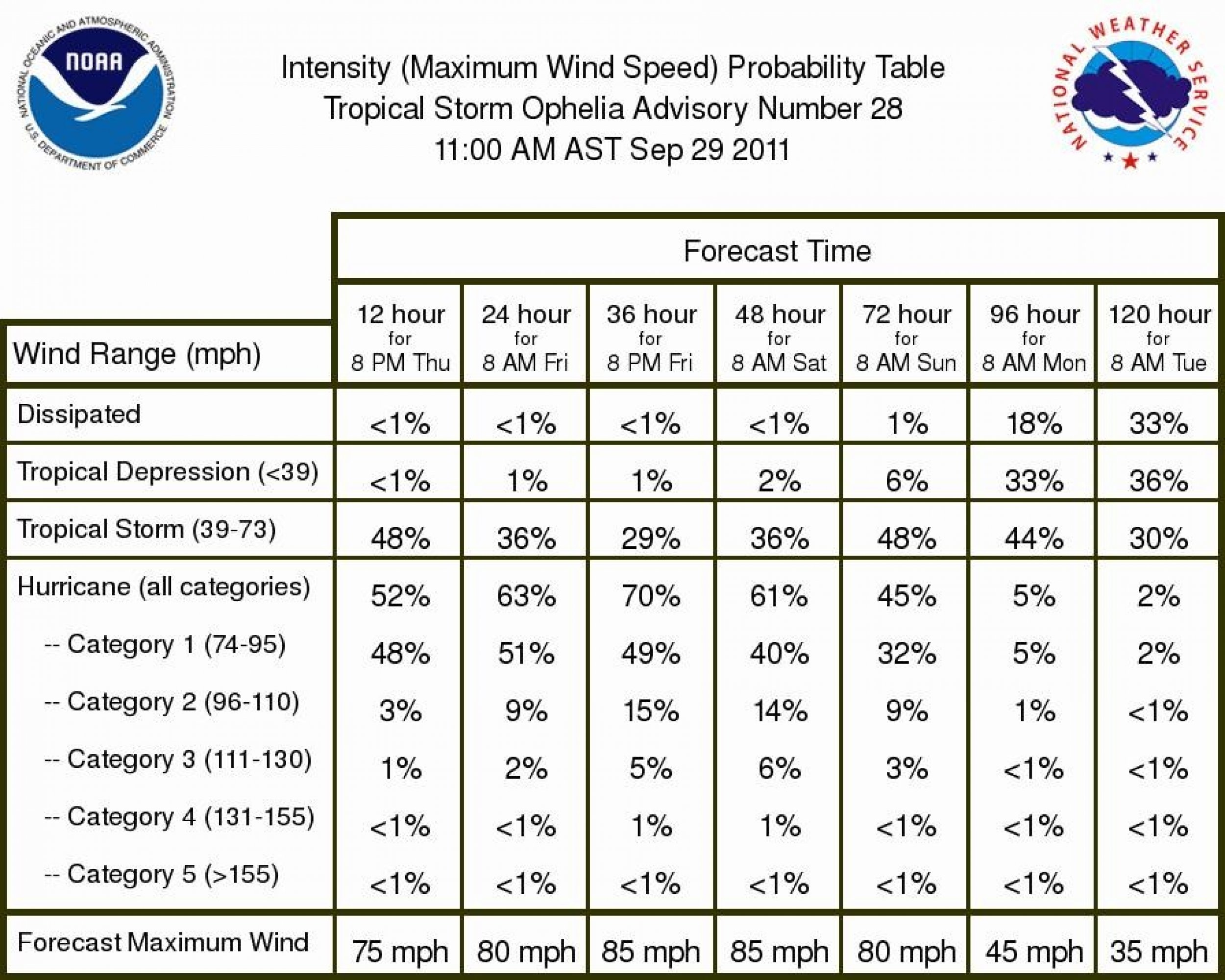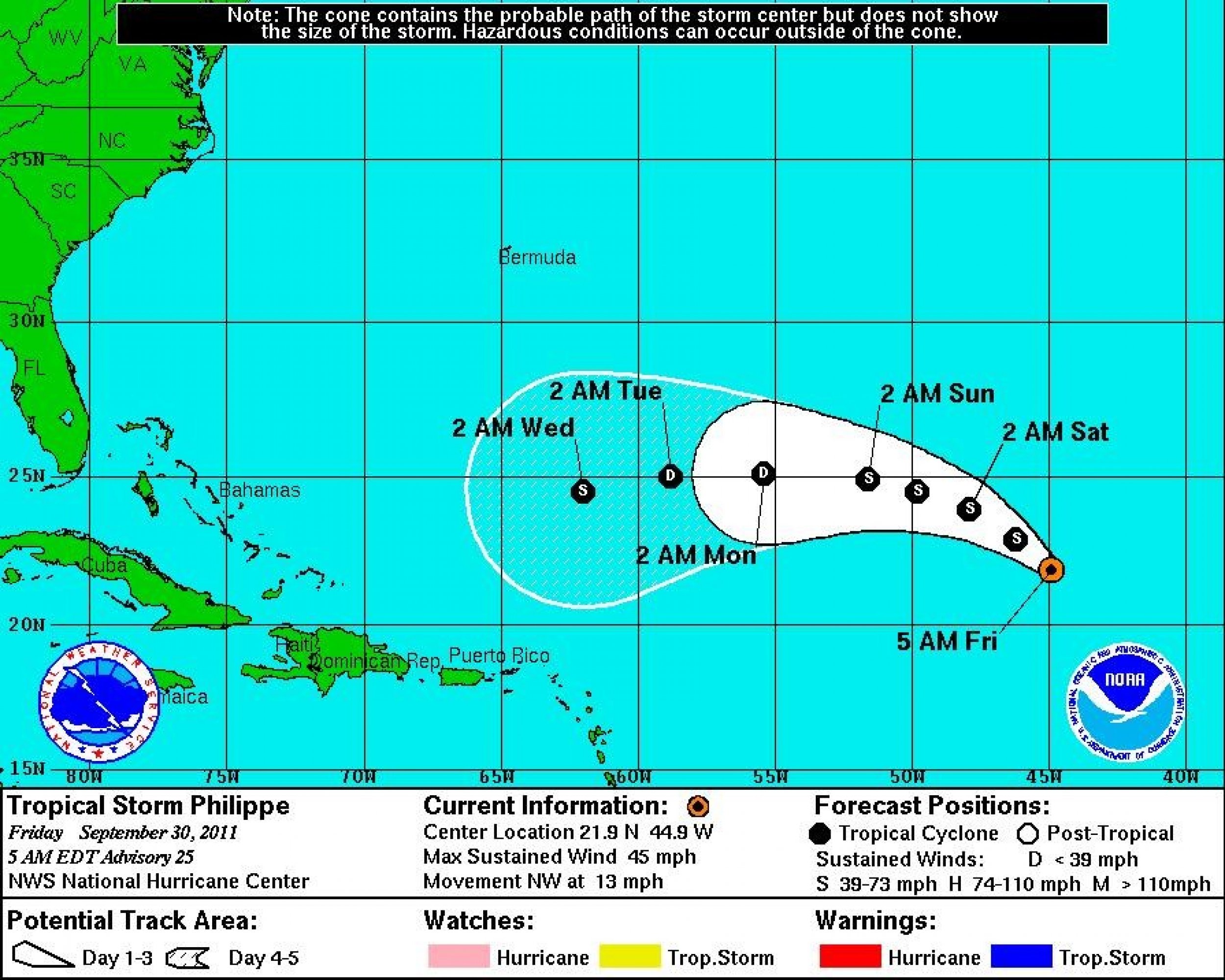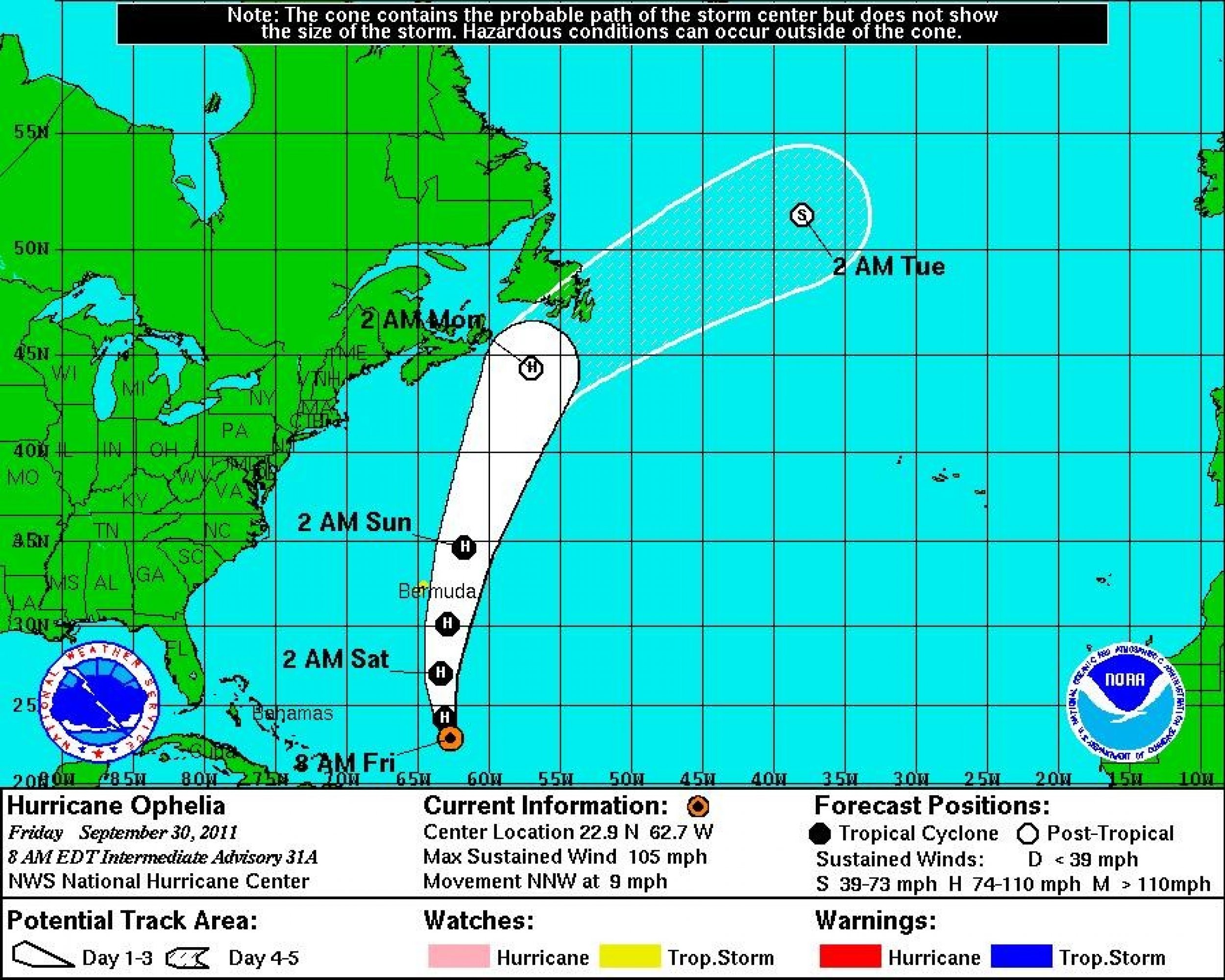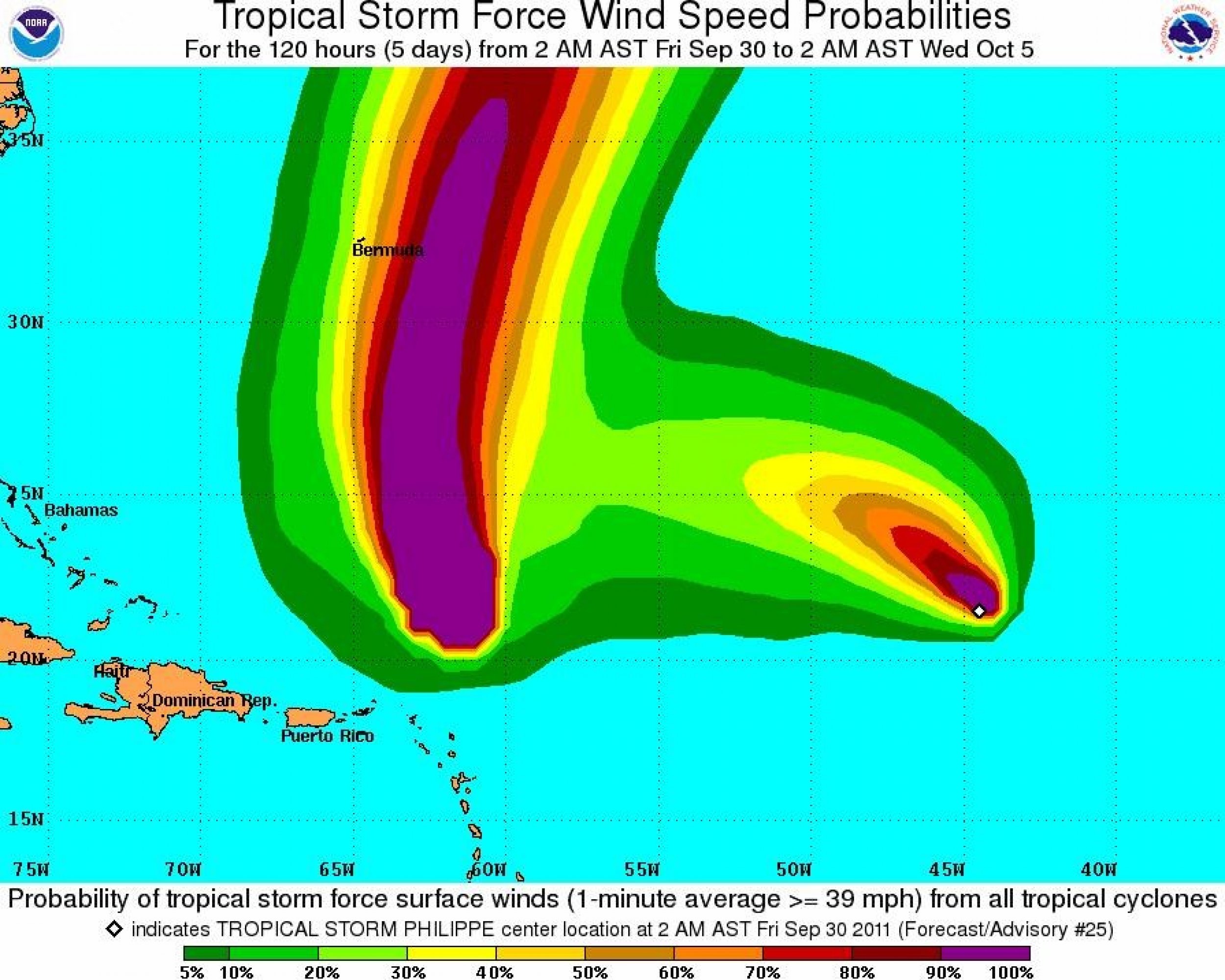Hurricane Ophelia 2011 Strengthens, Eyes Newfoundland [PATH & MAPS]
Hurricane Ophelia (formerly Tropical Storm Ophelia) has rapidly gained strength in the Atlantic, growing from a tropical depression midweek to a Category 2 hurricane on Friday on its track north.
Ophelia formed off the coast of Africa nearly two weeks ago, but disintegrated into a tropical wave before reemerging off the coast of the Northern Leeward Islands on Monday.
By Friday morning, the hurricane was located about 665 miles south of Bermuda.
According to the 8 a.m. EDT alert from the National Hurricane Center in Miami, Ophelia is packing maximum sustained winds of 105 mph with hurricane-force winds extending outward up to 30 miles and tropical-storm-force winds extending outward up to 175 miles from the storm center.
Ophelia is moving north-northwest at 9mph, but a turn toward the north and an increase in forward speed is expected later today. On its projected path, the core of Ophelia should pass east of Bermuda on Saturday on its way up toward Newfoundland early next week.
Ophelia is a Category 2 storm on the Saffir-Simpson Hurricane Wind Scale and some additional strengthening is expected during the next 48 hours.
Tropical-storm-force winds are possible for Bermuda starting Saturday afternoon and a tropical storm watch is in effect for the island. Forecasters at the National Hurricane Center warn that large swells created by Ophelia will cause hazardous surf conditions along the south shore beaches.
Officials in Canada are monitoring the storm with a watchful eye. Two weeks ago, Hurricane Maria made landfall in Newfoundland as a Category 1 storm. The Canadian island was also hit by another rare hurricane in 2010 when Hurricane Igor tore through eastern Newfoundland, sweeping away bridges, washing out roads, and causing nearly $200 million in damages.
Tropical Storm Philippe
Tropical Storm Philippe continued moving northwestward in the Central Atlantic with no change in strength.
According to the 5 a.m. EDT alert from the National Hurricane Center in Miami, Philippe had maximum sustained winds of 45mph with tropical-storm-force winds extending outward up to 85 miles from the storm center.
Some strengthening is expected today, but Philippe will likely weaken again late Saturday or Sunday as it follows a path that has it well north of the Northern Leeward Islands by midweek next week.
Ophelia and Philippe may be some of the last storms spawned by waves off the African Coast this season.
In October, the focus shifts into the Caribbean and the Gulf, explains Michael Brennan, Senior Hurricane Specialist at the National Hurricane Center in Miami. We are certainly not out of the woods yet.




© Copyright IBTimes 2024. All rights reserved.












